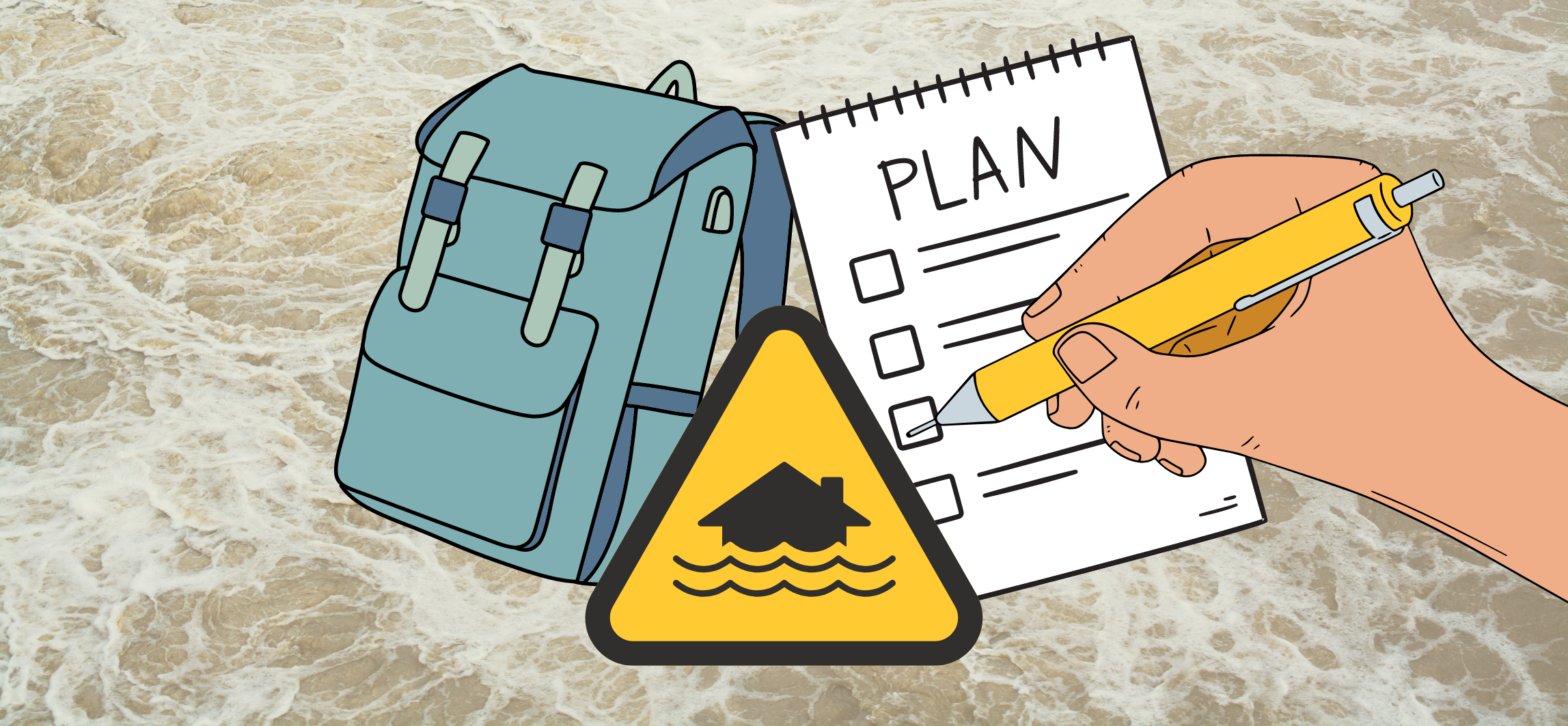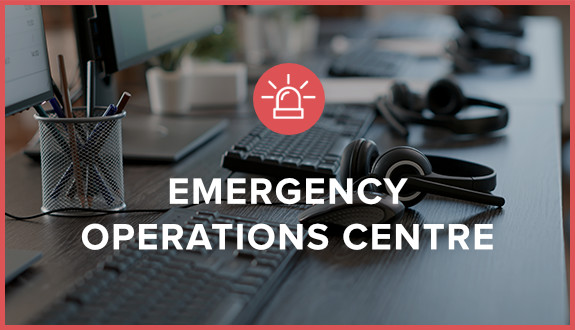
Floods are unpredictable and potentially devastating natural disasters. While we cannot control when or where floods occur, we can empower ourselves by taking proactive steps to prepare for these emergencies.
This guide uses Prepared BC’s tips and recommendations to help you and your loved ones prepare for floods and mitigate their impact. From understanding the risk factors to creating an emergency plan, it covers what you need to know to safeguard yourself and your property in the face of flooding. Whether you reside in flood-prone areas or simply want to be prepared, this guide will equip you with the knowledge and resources to face floods with confidence and resilience. Let’s dive in and learn how to prepare effectively for floods.
7 Steps to flood preparedness
Step 1: Make an emergency plan
Ensure your family knows what to do in an emergency by making a plan. To make emergency planning easier, Prepared BC has a fill-in-the-blanks emergency plan available for anyone to use. It only takes 20-minutes to create a plan so setup a time for everyone in your household to get together and start planning! It’s also recommended to let someone outside your home know your plan in case you are unreachable during an emergency.
If you already have an emergency plan, now is a good time to check it to make sure contact information and meeting places haven’t changed. It’s a good idea to update your emergency plan at least once a year.
Step 2: Research Insurance Coverage
Check with your insurance representative to determine if sewer backup and/or residential flood insurance is available for your property. You can also contact the Insurance Bureau of Canada at 1-844-227-5422 for information regarding home insurance.
It’s a good idea to have a copy of your insurance information attached to your emergency plan so it’s handy when you need it.
Step 3: Make Grab-and-Go Bags
In an emergency, it’s important to have some supplies ready to leave quickly. Most organizations recommend that you prepare to be self-sufficient for at least 72-hours so make sure to pack accordingly. If you already have a grab-and-go bag, make sure to check the contents every 6-months and replace any items that may have expired.
If you have a vehicle, it’s a good idea to have some of these items in there too in case you’re on the road during an emergency and can’t return home. Just make sure there is nothing in your vehicle that could melt or explode in the heat or the cold and ruin other items.
Visit Prepared BC for instructions on how to create a grab-and-go bag.
Don’t forget to make a grab-and-go bag for your pets too!
Step 4: Protect your home
Here are a few tips to prevent flood damage:
- Store valuables and important items or documents in water-tight containers or in higher places, like on a tall shelf or upper floor
- Clean your gutters regularly
- Keep nearby storm drains clear of debris
- In the winter, clear snow 3-5 feet away from your home’s foundation
This graphic from Prepared BC helps illustrate some of the steps you can take to prevent flood damage:

Step 5: Know your evacuation stages
Depending on the severity of the situation, an evacuation alert or order may be issued. It’s important to know the difference and to always follow the instructions from your band office, municipality, regional district, or local authority.
Evacuation Alert
During an evacuation alert you should be ready to leave on short notice and:
- Gather your grab-and-go bags, emergency plan, copies of important documents, and cherished mementos. Have them at the front door or already packed in the vehicle.
- Make sure your vehicle(s) are parked away from streams and waterways.
- Remove toxic substances away from streams and waterways.
- Remove toxic substances such as pesticides and insecticides from flood area to prevent pollution.
- DO NOT attempt to shut off electricity if any water is present.
- Use sandbags to block floor drains and toilets to prevent sewage backup.
- Always keep your vehicle’s gas tank half full in case you need to evacuate on short notice.
Evacuation Order
During an evacuation order you must leave immediately and:
- Do not attempt to cross rivers or flowing streams.
- Do not drive or walk across flooded roads. 15 centimeters (6 inches) rushing water can knock an adult off their feet and 30 centimeters (1 foot) of water can sweep away a vehicle.
- If your car begins to flood, abandon it quickly and head to higher ground.
- Check in at an Emergency Support Services (ESS) reception centre.
- When you’re safe, contact family and friends to let them know.
Tactical Evacuation
During a tactical evacuation, threat to life requires immediate action and there is no time to prepare or issue written warnings. This type of evacuation is often coordinated by the RCMP or local police, with assistance from other agencies.
Evacuation Rescind
During an evacuation rescind, all is now safe and you can return home. Continue to stay tuned for other possible evacuation alerts and orders.
If you have not yet been instructed to evacuate, but a flood is approaching you should:
- Monitor local radio stations, television news, and social media for the latest information from your local officials on sandbagging stations, possible evacuation procedures, and routes.
- Only use tap water if it has been tested and deemed safe by your local authority. Use bottled or boiled water for drinking, brushing your teeth, dishwashing, and cooking.
- If a flood warning is in effect, shut off electricity to areas that are at risk of flooding and move small appliances, electronics, and smaller furniture to upper floors or areas not likely to be affected.
Step 6: Know your flood advisories
The River Forecast Centre issues advisories about current or expected flood risks. There are three stages of notification:
- High streamflow advisory: River levels are rising or expected to rise rapidly, but no major flooding is expected. Minor flooding in low-lying areas is possible.
- Flood Watch: River levels are rising and will approach or may exceed the riverbank. Flooding of areas adjacent to affected rivers may occur.
- Flood Warning: River levels have exceeded the riverbank or will exceed the riverbank imminently, and flooding of areas adjacent to affected rivers will result.
These advisories and warnings can be found on the River Forecast Centre website.
Step 7: Download and Read Prepared BC’s Flood Preparedness Guide
Prepared BC’s Flood Preparedness Guide is an excellent resource to help you learn what to do before, during, and after a flood.
To contact FNESS outside our regular office hours (Monday to Friday; 8am to 4pm), please call 1-888-822-3388.






![24 Jonas Joe (5P63)[67] copy profile photo of Jonas Joe](https://www.fness.bc.ca/wp-content/uploads/2024/11/24-Jonas-Joe-5P6367-copy-scaled.jpeg)

